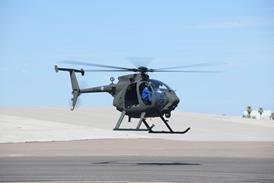The Hungarian Government is to sell off another 39%of Malev as the privatisation of the flag carrier goes into its second phase. Alitalia, which acquired 30%of Malev in the initial privatisation four years ago, may also have to sell its stake.
The sale to Alitalia, and of another 5% to Italy's state-owned Simest, left the Government holding 64% of Malev. This will now be reduced to 25%. The Alitalia stock may also "become available", says Malev chief executive Sándor Szathmáry, depending on the outcome of the state-owned Italian airline's negotiations with the European Commission over approval for its own recapitalisation. He estimates that Alitalia could raise "about $76 million" from a sale. Szathmáry adds that 51% of Malev will stay with "Hungarian investors".
One target for the cash coming from the privatisation is to increase the proportion of owned rather than leased aircraft, says Szathmáry. Fleet plans include the total retirement of all the airline's Tupolev Tu-134s by the end of the year, and their replacement with five Fokker 70s, rather than the three initially planned. Szathmáry adds that the Fokker deal "-is not yet finalised", however.
The airline's six Boeing 737-200s will be upgraded to meet forthcoming European navigation requirements, but the carrier is considering the new Boeing 737-500 as an "option" for replacing the -200s. The four 737-300s and two -400s will be retained.
The airline hopes to build up Budapest Ferihegy Airport as a connecting hub and says that it will finalise its new through check-ins "by the summer", with the aim of achieving a maximum 35min connection time. Flights are being organised into three daily "banks" of feeder services. Szathmáry says that Malev will also continue to pursue "tactical" codeshare deals such as those which are already in place with Air France, CSA-Czech Airlines, Delta Air Lines, Iberia and Swissair.
Malev is expected to report shortly that pre-tax profits more than doubled to HF438 million ($2.4 million) in 1996, although that is HF800 million below early forecasts because of steep fuel price rises, says Szathmáry. Sales for the year stood at HF63 billion. Passenger numbers grew by 21% in 1996 against a capacity growth of only 11%, helping load factors to rise three points to 57%.
Source: Flight International























